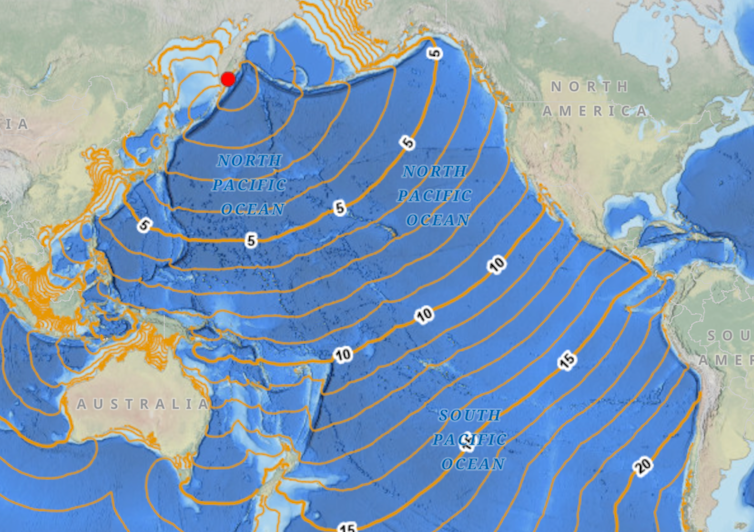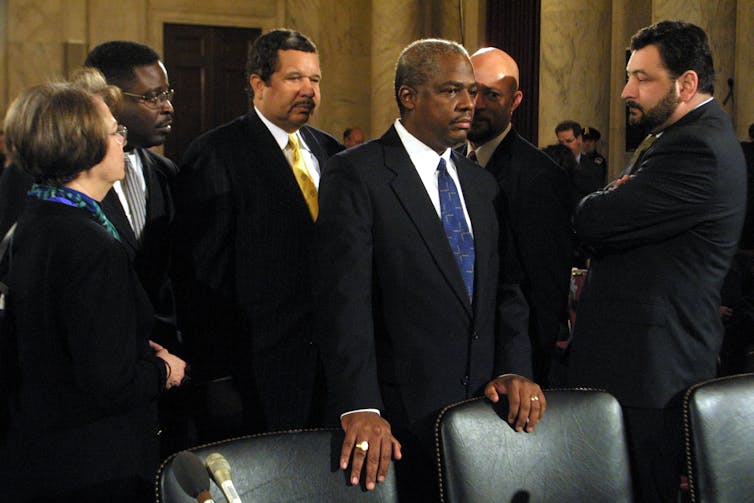Source: The Conversation – UK – By Jen Wilson, Senior Exercise and Health Practitioner, Nottingham Trent University

The “100 kettlebell swings a day” challenge is the latest viral fitness endeavour on social media. The challenge is simple: pick up a kettlebell and do 100 swings (bringing the kettlebell from between your legs and using your core and glutes to swing it up to chest or shoulder height) every day. These can be done either in one stint, or broken up throughout the day.
Proponents of the challenge say it leads to fat loss, improved muscle mass and a stronger posterior chain (glutes, back and hamstrings) – all in a short daily session.
At first glance, it sounds like a time-efficient, no-fuss approach to getting fitter with minimal equipment. But while there’s some merit in consistency, this type of challenge often ignores fundamental principles of exercise and training – and could even do more harm than good.
Here’s a few reasons why it might be best to skip the kettlebell challenge – and what you can try instead.
1. It’s not personalised to you
One of the biggest flaws in the 100 kettlebell swings challenge is that it treats everyone the same, regardless of experience level, injury history, mobility or training goals. What’s manageable for an advanced athlete could cause problems for a beginner with poor hip mobility or lower back issues.
Daily, high-rep dynamic movements which use explosive power, such as kettlebell swings, require good technique, good posture and body awareness. Without that, you’re simply reinforcing poor movement patterns. Worse, you could be inviting injury when such movements are done repeatedly.
Effective training should be personalised – or at least adapted to your movement abilities and fitness requirements in order to have the most impact.
2. No room for progress
The human body adapts quickly. If you do the same 100 reps with the same amount of weight every single day, the challenge becomes less effective over time. That initial burn you felt in week one? It’ll be gone by week three.
In well-designed training programmes, there’s a principle called “progressive overload”. This involves gradually increasing stress on the body, either through the amount of weight you’re lifting, the number of repetitions you do of an exercise, the number of sets you complete or the complexity of your movements.
The 100-swing challenge skips this entirely. This means you’ll probably hit a plateau fairly quickly.
3. Risk of injury
Doing 100 swings every day, especially without rest or proper technique, can lead to injuries such as muscle strains or joint pain in the back and shoulders.
Too much repetitive movement, insufficient recovery time and inexperience can also lead to an increased risk of an overuse injury – a condition caused by repeated stress on muscles, joints or tissues. This often results in pain, swelling, or stiffness and could potentially mean taking weeks or even months off from working out to fully recover.
Picking up this challenge might be appealing but it also ticks a lot of boxes for overuse injury.
4. It undermines recovery
Recovery between workouts is not optional. In fact, it’s where the actual adaptation happens. Training breaks the body down, while recovery builds it back stronger.
Kettlebell swings, especially if performed explosively and with heavier loads, place stress on your central nervous system. Doing them every single day without rest days, mobility work (such as stretching) or variation can lead to chronic fatigue, poor sleep, nagging injuries and even reduced performance in other areas of training.

wavebreakmedia/ Shutterstock
If you’ve started the challenge and find you’re constantly sore, tight or worn down, the challenge may be doing more harm than good.
5. It’s a one-dimensional solution
Fitness isn’t just about repetition. True strength and conditioning involves a variety of movements, such as pushing, pulling, squatting, rotating and stabilising.
The 100-swing challenge trains only one plane of motion and one movement pattern. While that’s better than nothing, it’s nowhere near comprehensive. Moreover, doing the same task over and over can become mindless. You’re not necessarily getting stronger or fitter – you’re just going through the motions.
A smarter way to use kettlebells
In fairness, the challenge does have some value in the right context. For beginners who need structure, it can help establish a daily habit. It requires minimal equipment, little space and can raise heart rate, build endurance and activate the posterior chain.
But for it to be sustainable and effective, a few things must be in place:
- Your form must be solid
- The kettlebell weight must be appropriate for your fitness level
- You should vary the volume or intensity over time
- You should include rest days
- It should be part of a broader training plan – not your only form of training
If you enjoy kettlebell swings, there are more intelligent and safer ways to include them in your training than doing 100 reps every day.
Try incorporating swings into interval sessions, circuits or strength workouts with varied repetitions and loads. Instead of doing 100 swings alone, aim for 100 total reps using a mix of exercises, such as goblet squats, rows and presses. This approach not only keeps things more balanced, but also reduces the risk of injury from overuse and gives different muscle groups time to recover .
The “100 kettlebell swings a day” challenge might sound appealing in its simplicity, but simple doesn’t always mean smart. Without personalisation, progression and recovery, it can quickly turn into a repetitive grind that risks doing more harm than good.
Yes, training should be challenging, but it should also be strategic. Your body deserves more than just a checkbox of daily repetitions – it needs the right moves done the right way.
![]()
The authors do not work for, consult, own shares in or receive funding from any company or organisation that would benefit from this article, and have disclosed no relevant affiliations beyond their academic appointment.
– ref. Viral ‘kettlebell challenge’ could do you more harm than good – here’s why – https://theconversation.com/viral-kettlebell-challenge-could-do-you-more-harm-than-good-heres-why-260010










